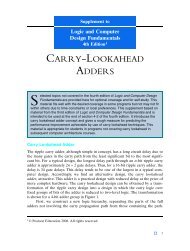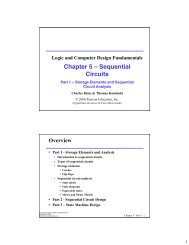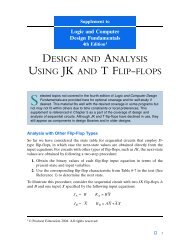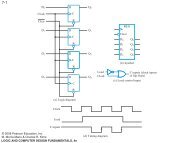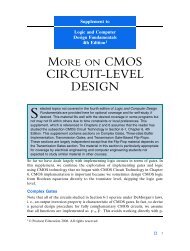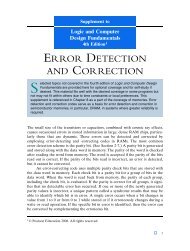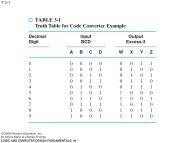Chapter 5 â Sequential Circuits
Chapter 5 â Sequential Circuits
Chapter 5 â Sequential Circuits
You also want an ePaper? Increase the reach of your titles
YUMPU automatically turns print PDFs into web optimized ePapers that Google loves.
Sequence Recognizer Procedure<br />
• To develop a sequence recognizer state diagram:<br />
• Begin in an initial state in which NONE of the initial portion of<br />
the sequence has occurred (typically “reset” state).<br />
• Add a state that recognizes that the first symbol has occurred.<br />
• Add states that recognize each successive symbol occurring.<br />
• The final state represents the input sequence (possibly less the<br />
final input value) occurence.<br />
• Add state transition arcs which specify what happens when a<br />
symbol not in the proper sequence has occurred.<br />
• Add other arcs on non-sequence inputs which transition to<br />
states that represent the input subsequence that has occurred.<br />
• The last step is required because the circuit must recognize the<br />
input sequence regardless of where it occurs within the overall<br />
sequence applied since “reset.”.<br />
<strong>Chapter</strong> 5 - Part 2 7<br />
State Assignment<br />
• Each of the m states must be assigned a<br />
unique code<br />
• Minimum number of bits required is n<br />
such that<br />
n ≥ log 2 m<br />
where x is the smallest integer ≥ x<br />
• There are useful state assignments that<br />
use more than the minimum number of<br />
bits<br />
• There are 2 n - m unused states<br />
<strong>Chapter</strong> 5 - Part 2 8<br />
4



